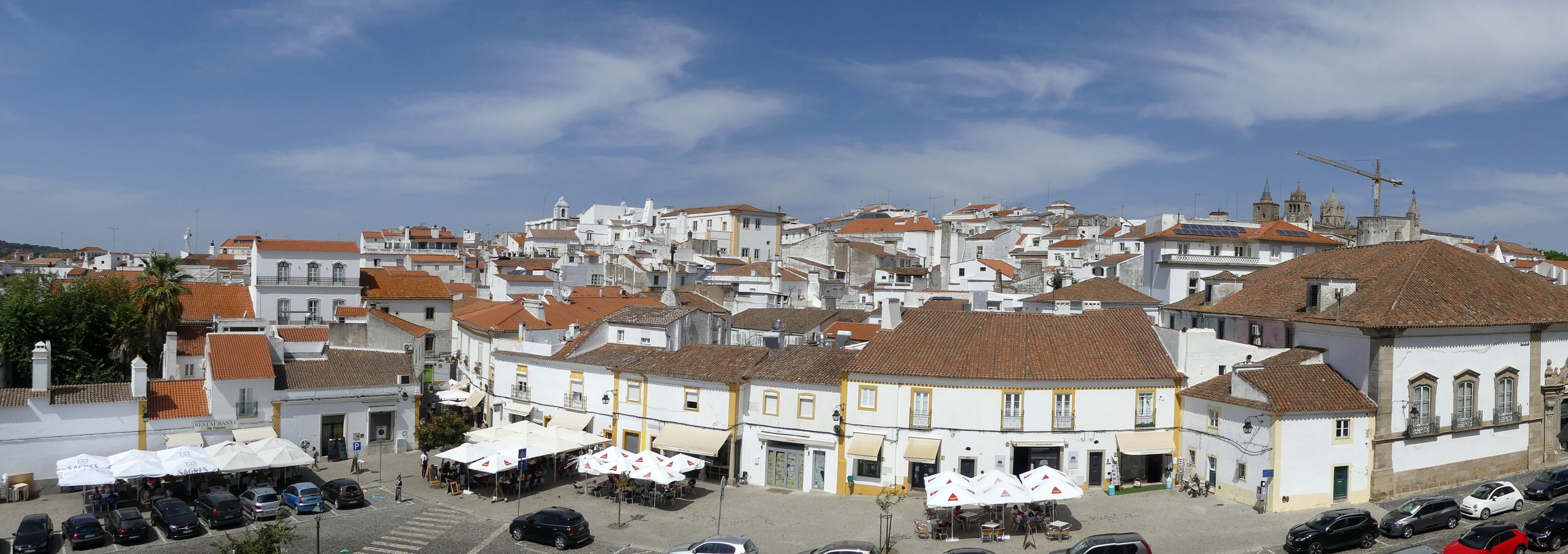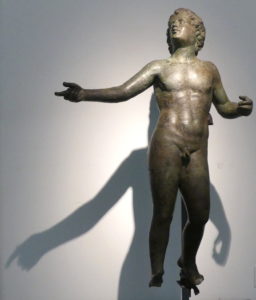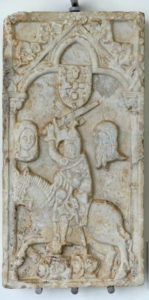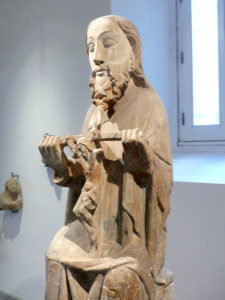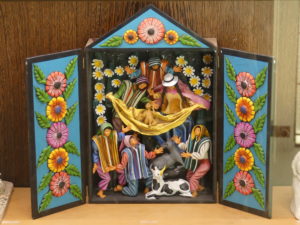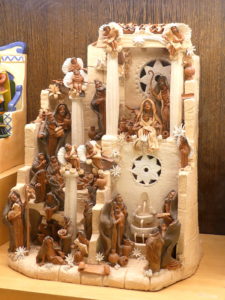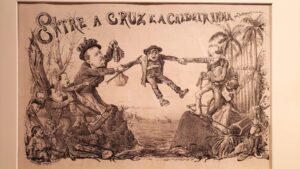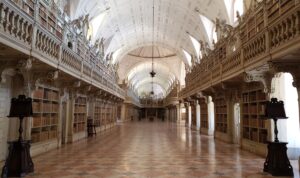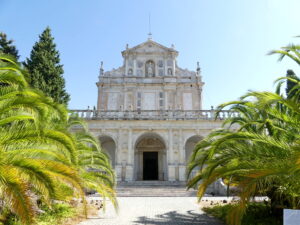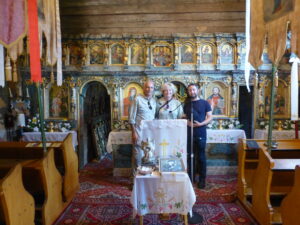In Brief: For all the notable highlights of the city, we were seduced more by its overall ambiance, absorbed through ambling, idling in plazas, and sipping Alentejo wine.
The charm of Évora, a World Heritage site, gradually affected us.
We had expected to be awed by impressive medieval structures like the Cathedral and the city’s enclosing walls, the vestiges of the Roman city, and by other attractions like the ossuary and the aqueduct.
We found two remnants of Évora from the Roman era readily accessible to visitors. One is a huge circular room under the center of the beautiful City Hall, once the hot bath of the Roman thermal spa. It was uncovered about a hundred years ago during construction of the municipal building, so the architects just arranged things around it.
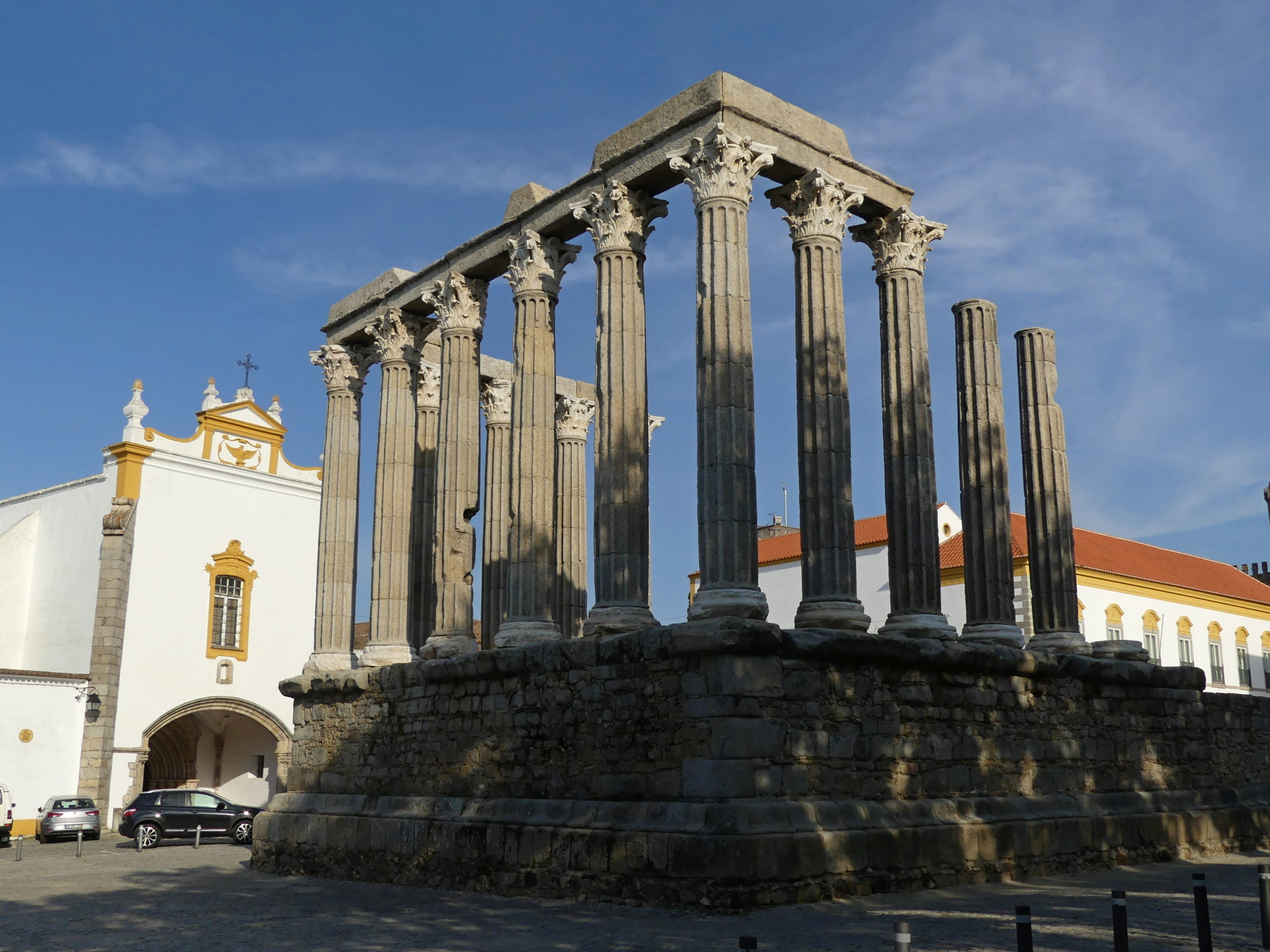
The other is this impressive Temple of Diana facing a park along the top of the highest hill of the city center near its Cathedral. Behind it is a ducal palace still occupied in part by the heirs, but also open as a museum. We kept returning to the kiosk café from which this photo was taken to enjoy the scene and some beverages.
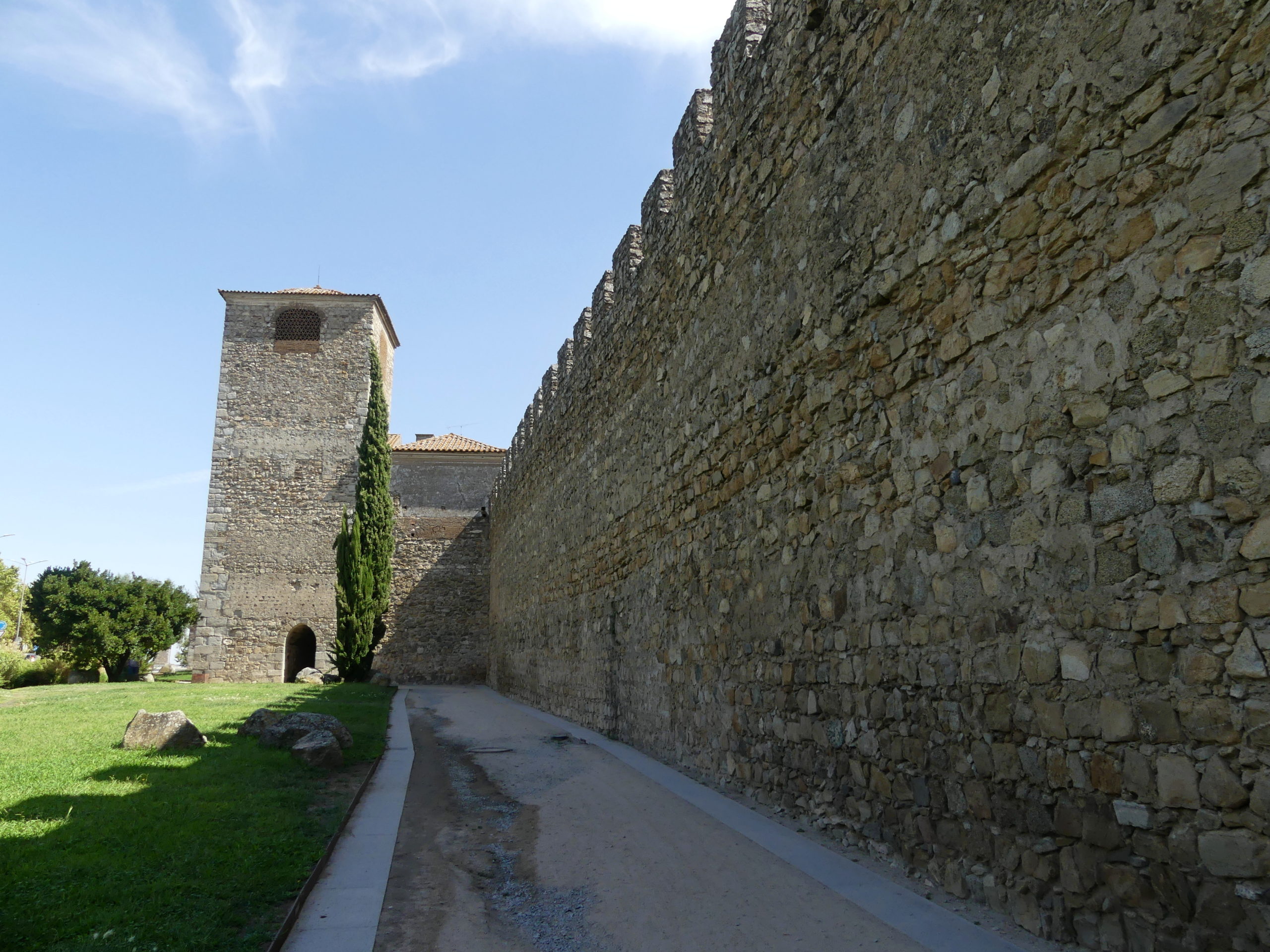
A bit nearer in time, Évora’s medieval walls form a uniform envelope around the city so it’s hard to tell where you are. Any section seems much like another, as you can see in this part with a watchtower. The walls, which enclose the city completely, are just a few bricks thick. So there’s no walking room along the top of them, just alongside.
Yet, as fine as these major sites were, we were seduced more by the overall ambiance of the city, one ideally absorbed through ambling walks along the streets, idles in the plazas, and the sipping of Alentejo wine at the cafes.
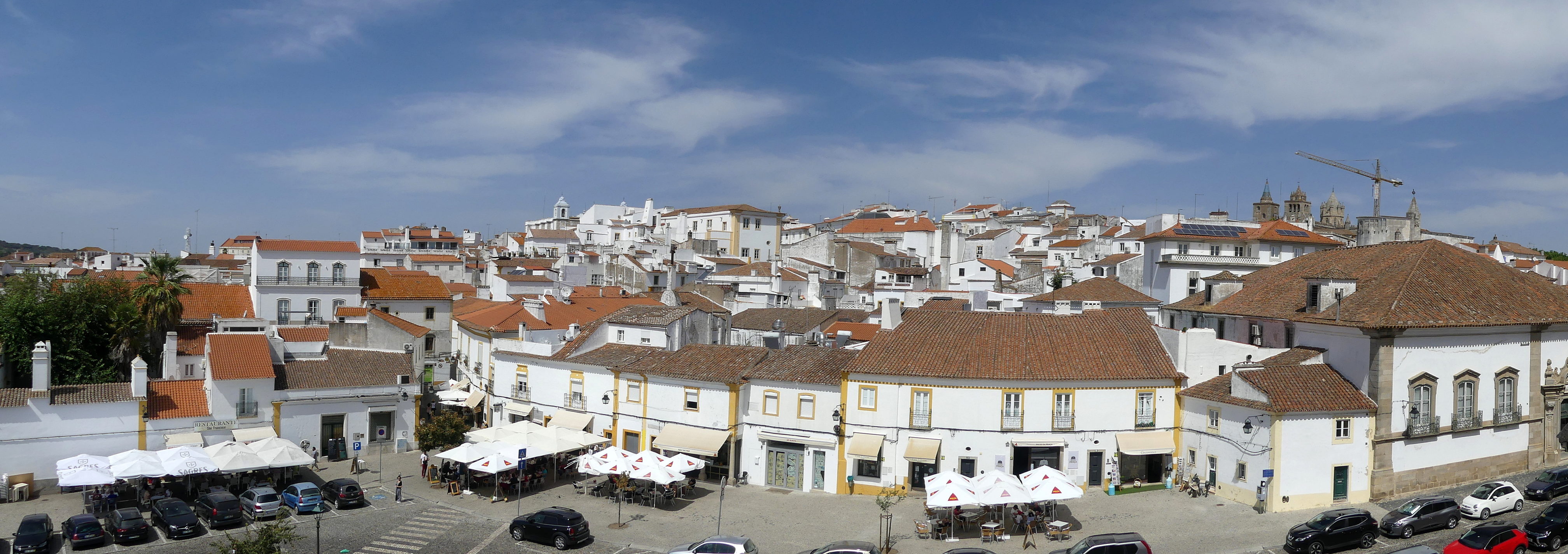
Take this panorama of the heart of Évora from the Sao Francisco church at the southern end of town. The medieval Se cathedral peaks out from the top of the hill at the right side. And a few other church steeples around town peak out as well. The partly visible plaza at the bottom is one of many gathering places around town, like the huge Giraldo Square or the many small plazas that suddenly appear during a walkabout. Only the cars and the lone crane near the cathedral (as well as the color snapshot) underscore that this view is modern, not hundreds of years old.
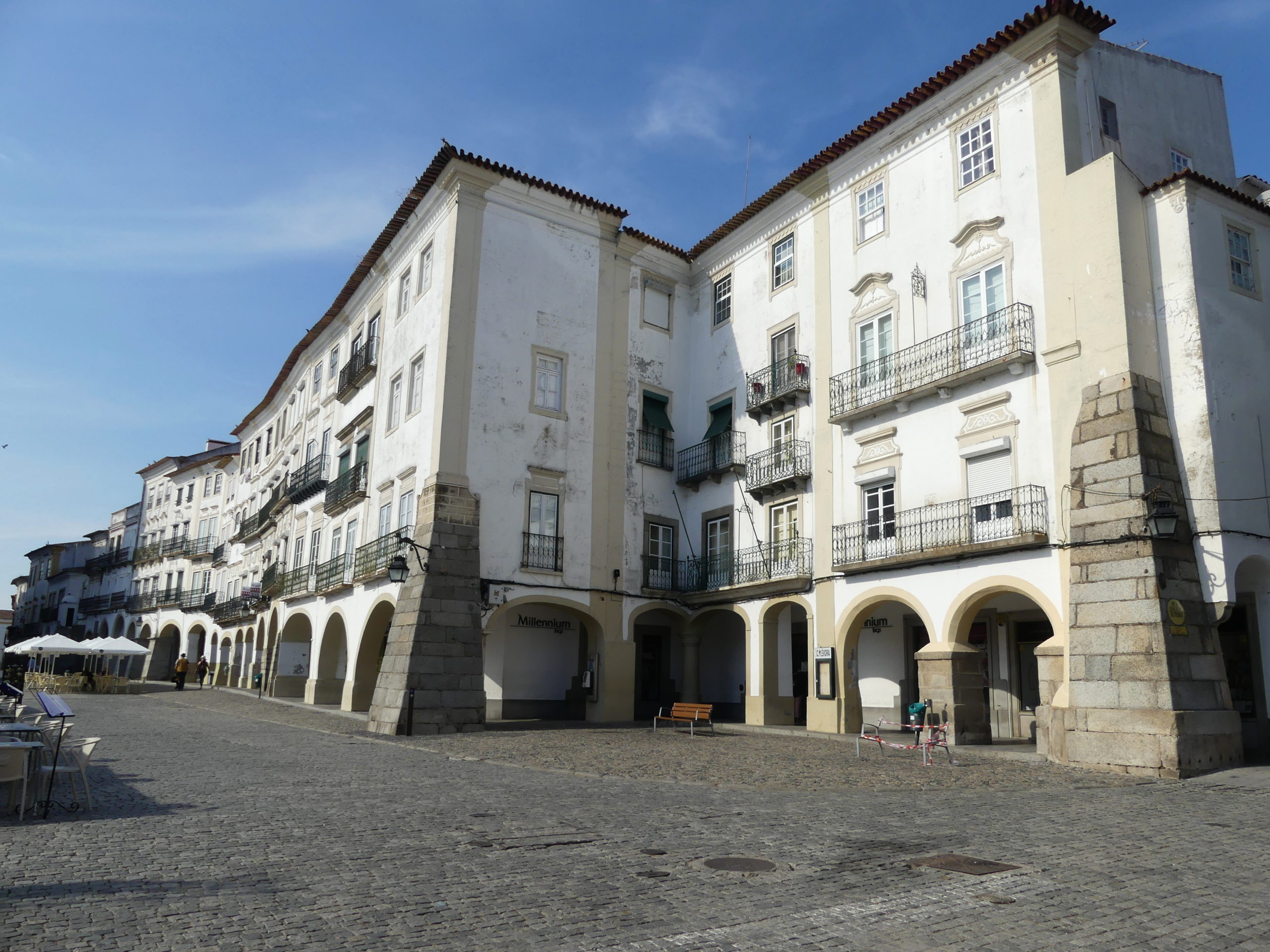
The breathtaking entry into Giraldo plaza is another grand moment. The plaza honors the savior of the medieval city, Giraldo the Fearless, who fearlessly defeated the Moors in the 12th century. It feels a kilometer long when you’re there, but is ably filled by several open air cafes and restaurants (somewhat empty at this time), as well as ringed by such attractive buildings as these…many of which have become banks due to their grandeur!
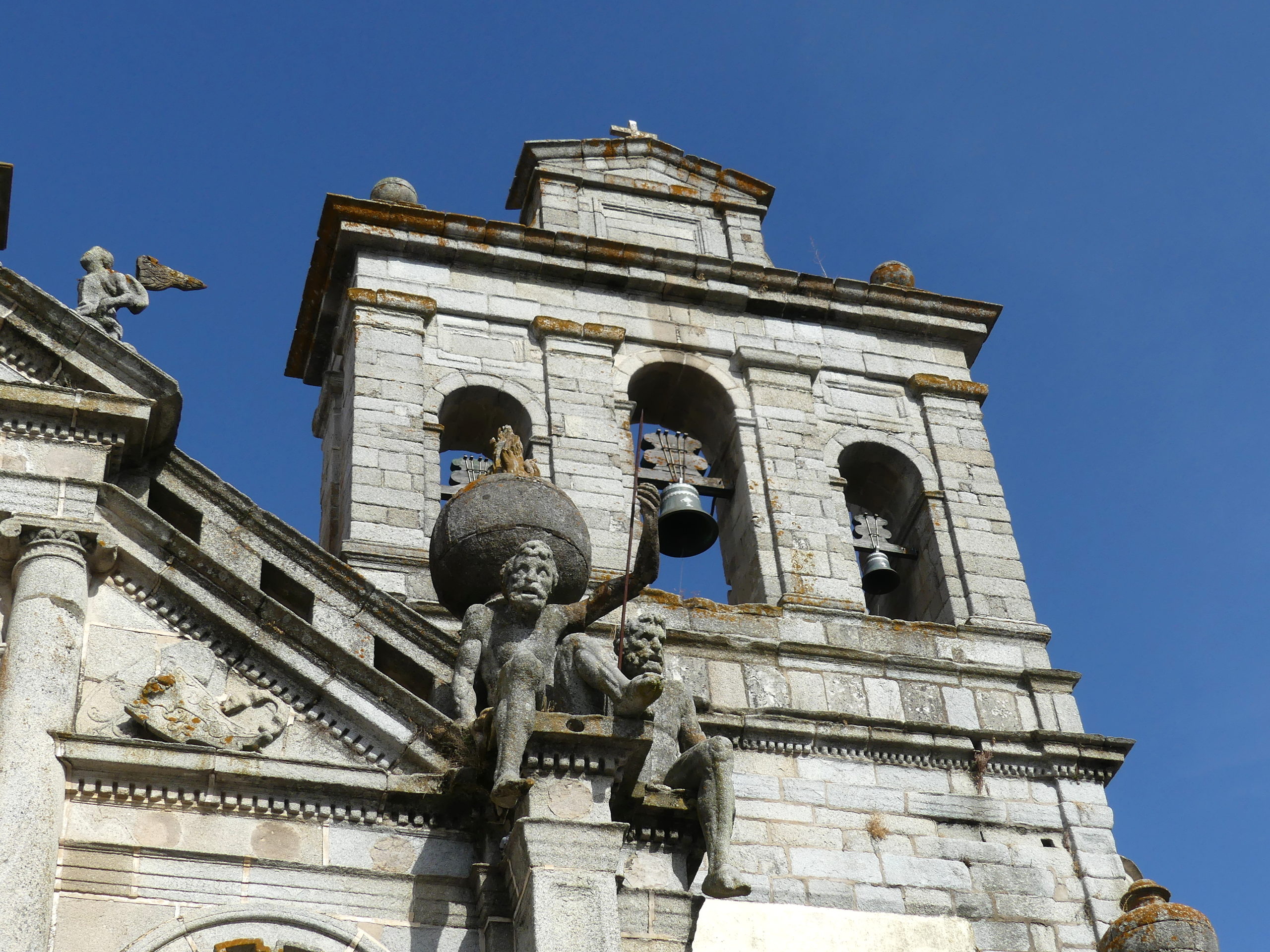
By contrast, tucked off in a relatively unvisited part of town is the Graça church, which featured the best decoration in town. The chapel open to visitors was surprisingly plain and uninteresting, but that didn’t matter when there were so many figures to discover outside, like the tiny angel on the roof edge to the left. The gnomic figure in front of the stone ball has been greeting visitors with his waving hand for centuries.
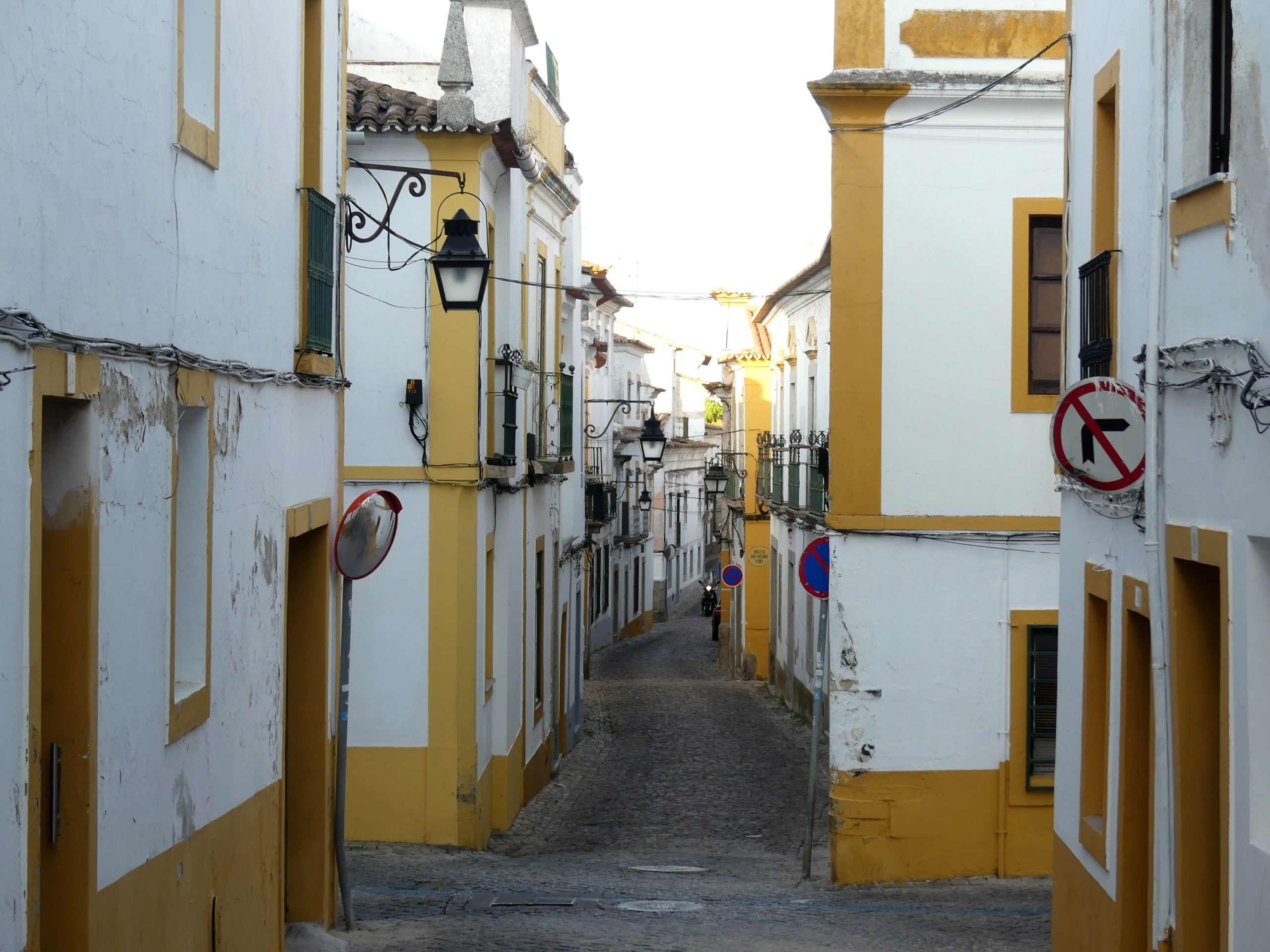
Yet much of the engaging ambiance comes from the homogeneous beauty of residential streets like this one. One’s first impression is whiteness, what with all the white walls of the buildings. The charm truly emerges from the colorful raised borders of windows and doors or the false columns on the corners. Over time as we looked carefully, we noticed a wide range of colors too.
For a driver unfamiliar with the terrain, these narrow streets unattractively threaten to scrape up your car when you try to make a turn from one narrow street to another. Many are barely two car widths in size. It’s nearly impossible to drive a street when other cars park along them. We suffered some paint transfer while maneuvering during our arrival, but the ever-so helpful workers at our hotel (the wonderful Albergaria do Calvario) removed the damage with smoothing compound.
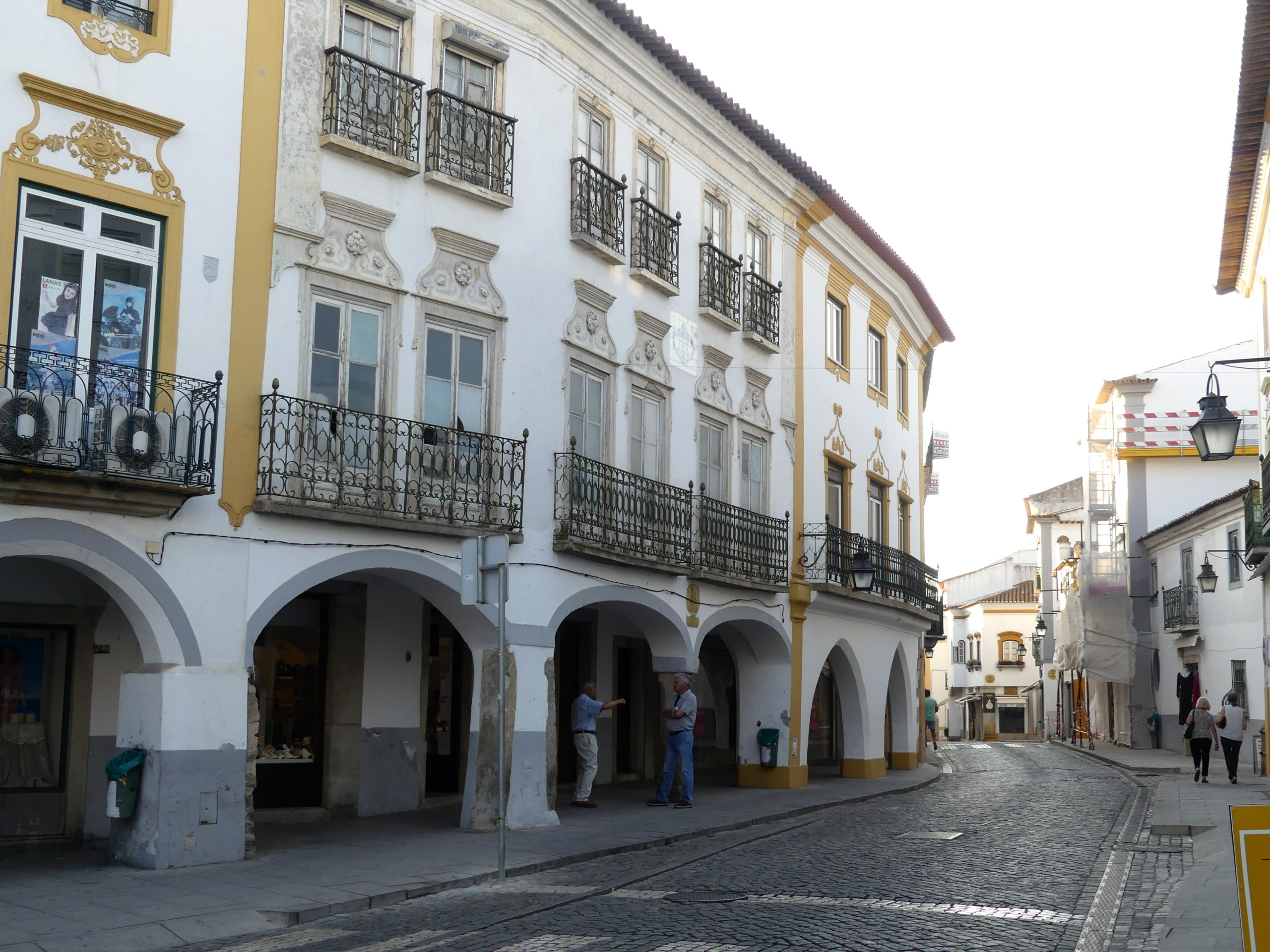
The wider streets have become the thruways for the town, often graced by more elaborately decorated commercial or civic buildings with fine wrought-iron balconies.
During a lull in the pandemic, we felt safe being there. We knew the region was relatively free of viral problems, but the city’s businesses and its masked visitors still maintained extensive precautions. The tourists were few and far between. Hotels seemed at most one-quarter full, and outdoor plaza cafes even emptier. Just scattered family and buddy groups – mainly Spanish, English and Portuguese – happily wandered the town as we did.
Museums
Évora’s urban heritage of over 2000 years has left a number of masterpieces currently collected in various museums around town. In just a few days we ranged from Rome’s legacy to the height of the Middle Ages, from the surprising Renaissance alliance with Holland to diverse international art collections. Here are just a few of the mind-spinning works we found.

We had never seen anything quite like this – the so-called Folding Virgin, or Virgin of the Convent of Paradise from the late 15th century. When closed, the ivory sculpture depicts Mary holding the baby Jesus. Opened into this triptych, it reveals nine intricately carved scenes in ivory from the life of Mary. The museum also houses many fine wood-carved religious figures of saints and the divine. (Cathedral Treasury museum)
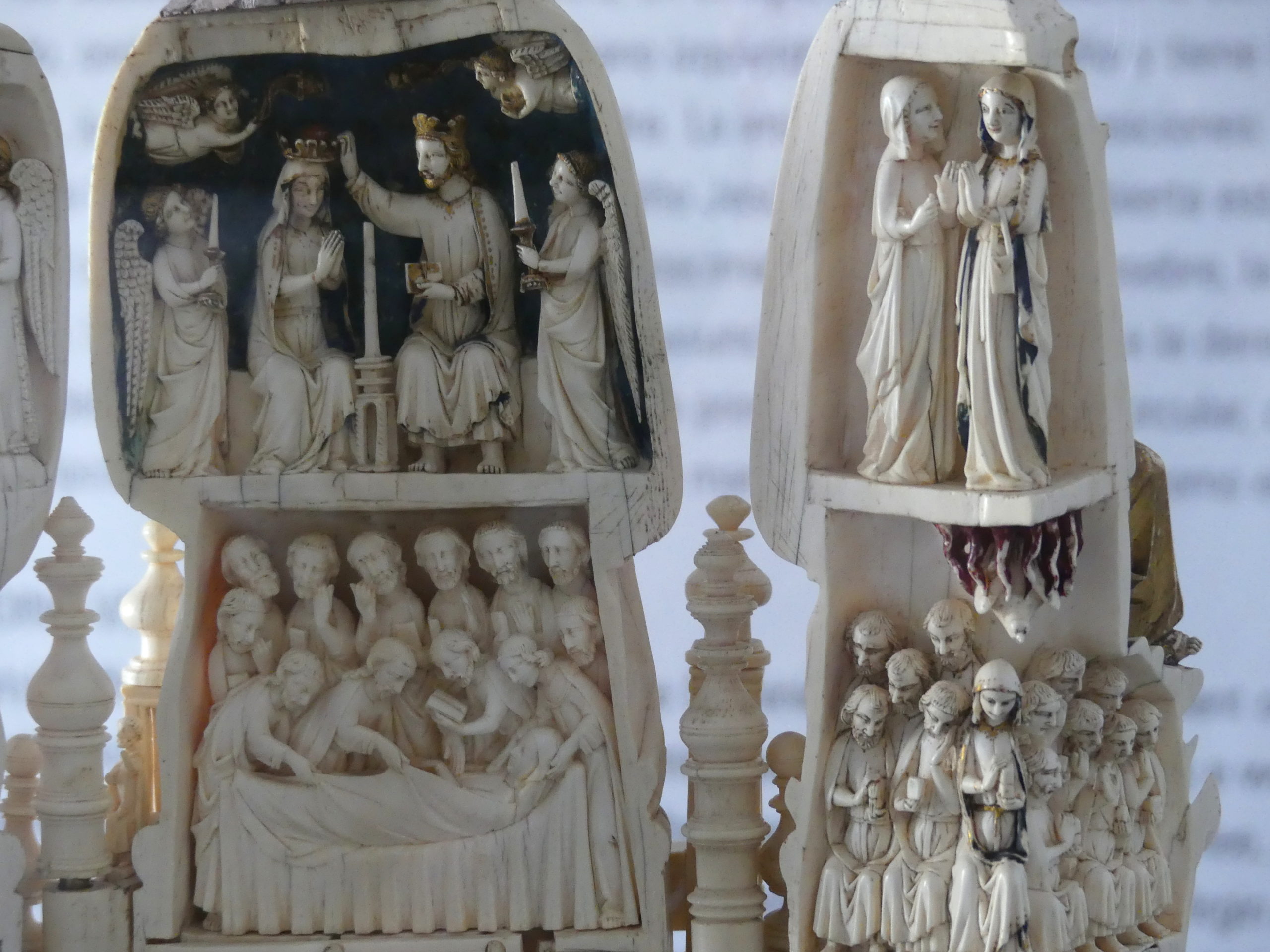
A close-up of four scenes in ivory within the Folding Virgin: top right, Mary’s visitation with sister Elizabeth; bottom right, the descent of the Holy Spirit in a searing blaze; top left (or the middle of the sculpture), Mary’s coronation after death, with light sabres; below that, a very busy Nativity scene. (Cathedral Treasury museum)
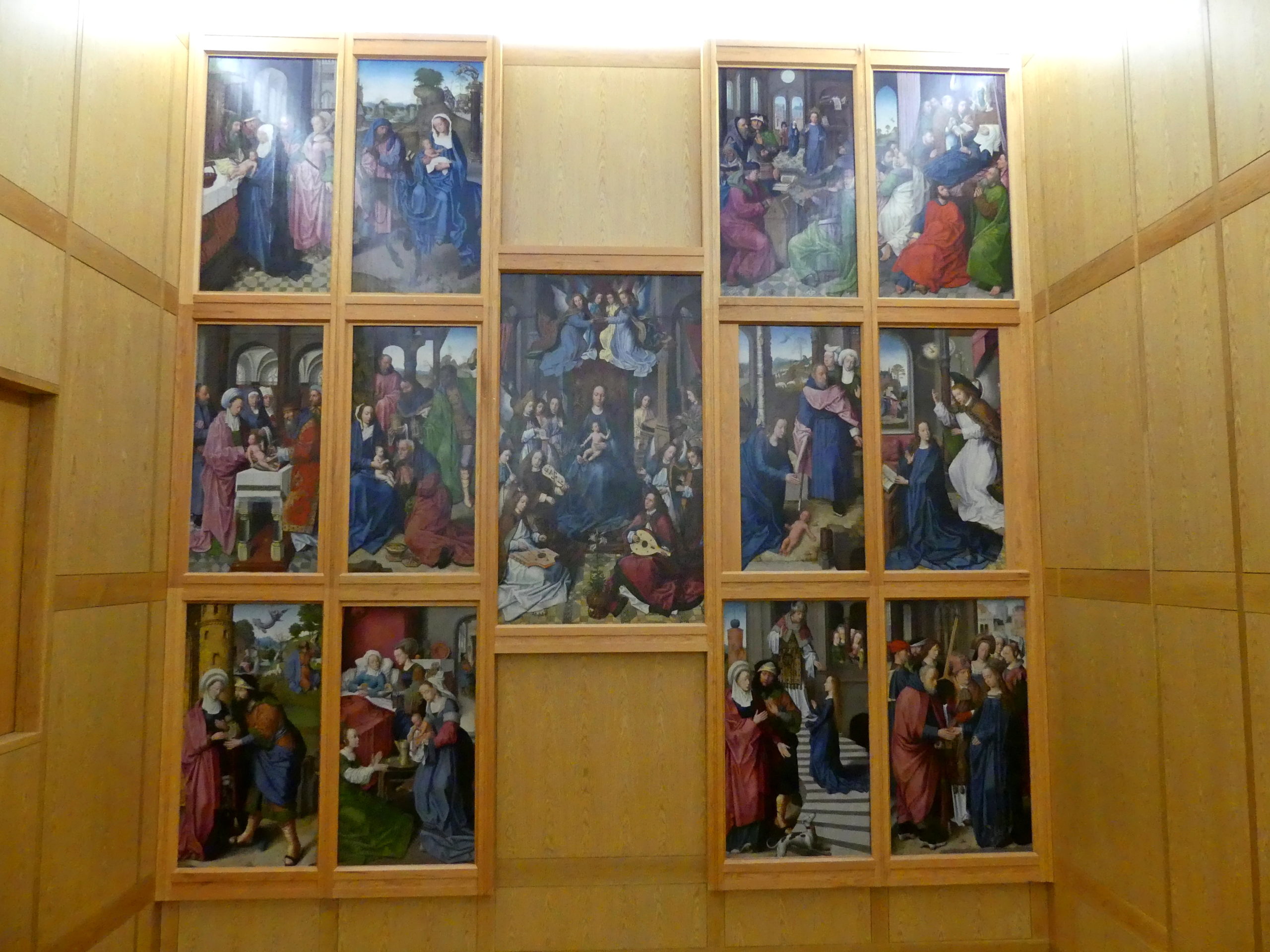
These splendid Flemish paintings from around 1500 were painted in Bruges as a gift from the grateful Dutch to the Bishop of the Évora Cathedral. Little did we know about the valuable trading alliance between Holland and Portugal at that time. Not only did it yield economic benefits, we learned, but also an exchange of art and artistry between the two countries, as demonstrated by other paintings at the museum. The layout recreates how these paintings looked in the original retablo, or altarpiece, celebrating the life of Mary. (Museum of Évora)
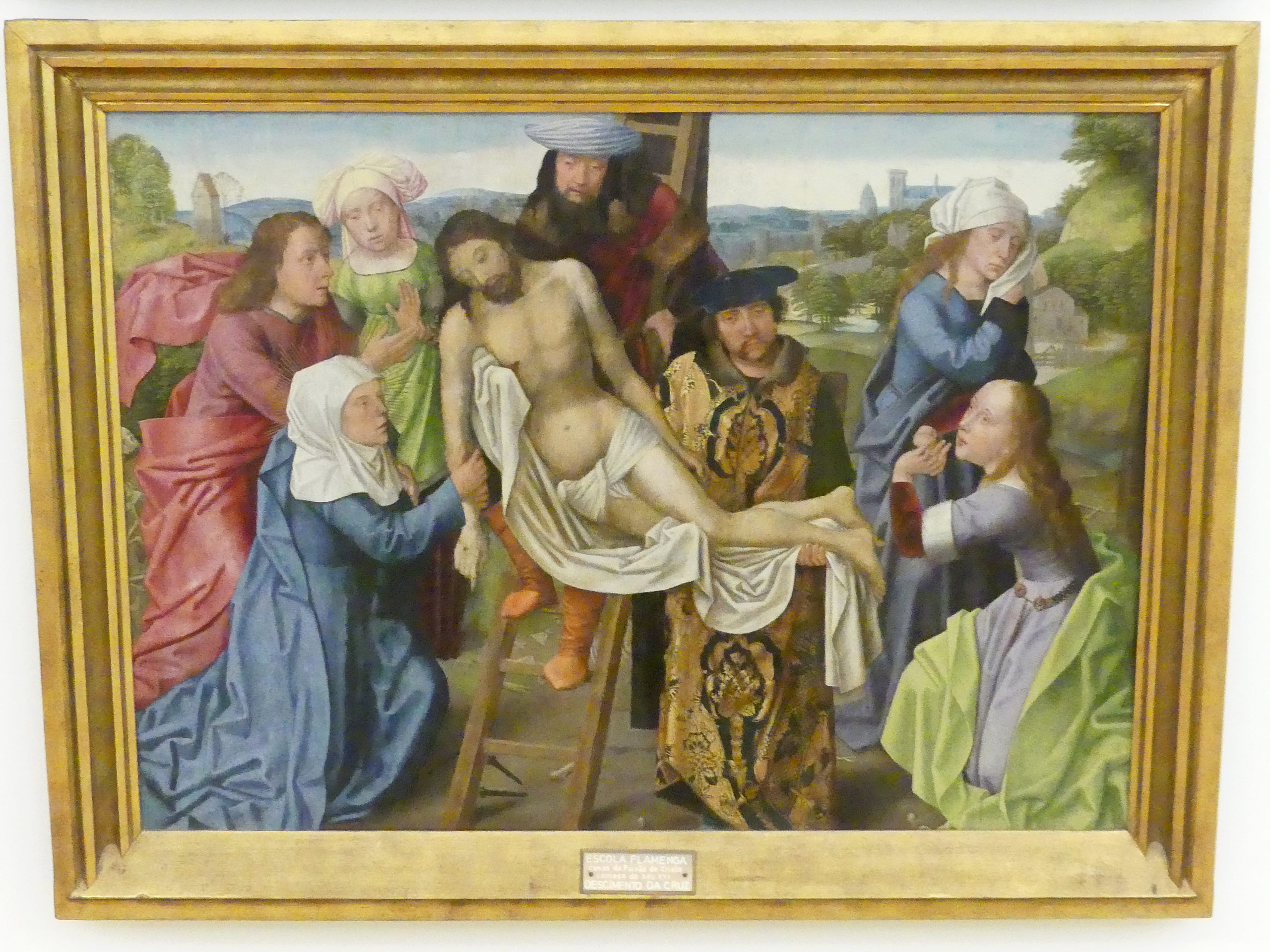
The deposition of Christ from the cross, in a moving depiction of mourning. It’s one of six vivid paintings of Jesus included in the gift from the Dutch to the Évora bishop. The museum displays other Flemish works, Portuguese painters following the Flemish style, as well as various renowned Portuguese painters like Obidos (Museum of Évora)
Ephebos, a bronze from the Roman period, part of an extensive collection of funerary stones and tombs, as well as marble sculptures. (Museum of Évora)
A 14th century marble plaque of the city’s coat of arms. We presume that the central figure is town hero, Giraldo the Fearless, the one who defeated the Moors in the 12th century and began construction of the Cathedral. Strangely he seems to have swung his sword a bit too much and severed a few local heads. (Museum of Évora)
Another unusual representation, this of the Trinity, somewhat medieval cubist in style. The Buddha-like figure of God holds a rough-hewn Jesus on the cross, while the Holy Spirit dives from his divine beard to connect the two. (Museum of Évora)
On the southern edge of town, another large and extensively renovated church, Sao Francisco, is mainly visited for its grim assemblage of monk bones in its ossuary (LINK). Its museum, however, features some fine works as well as the display of an extensive collection by Canha da Silva of Nativity scenes from around the world.
This exuberant one with a bouncing baby Jesus comes from Peru, formed from painted potato dough (!) and wood. (Museum at Sao Francisco church)
Another Nativity scene in clay from the international collection, this one meticulously realized in Portugal however. (Museum at Sao Francisco church)
A marble fragment from the Roman period, one of a series laid out in a tablature. We were caught by the delicacy of the see-through marble work even in a less than monumental piece. (Museum of Évora)
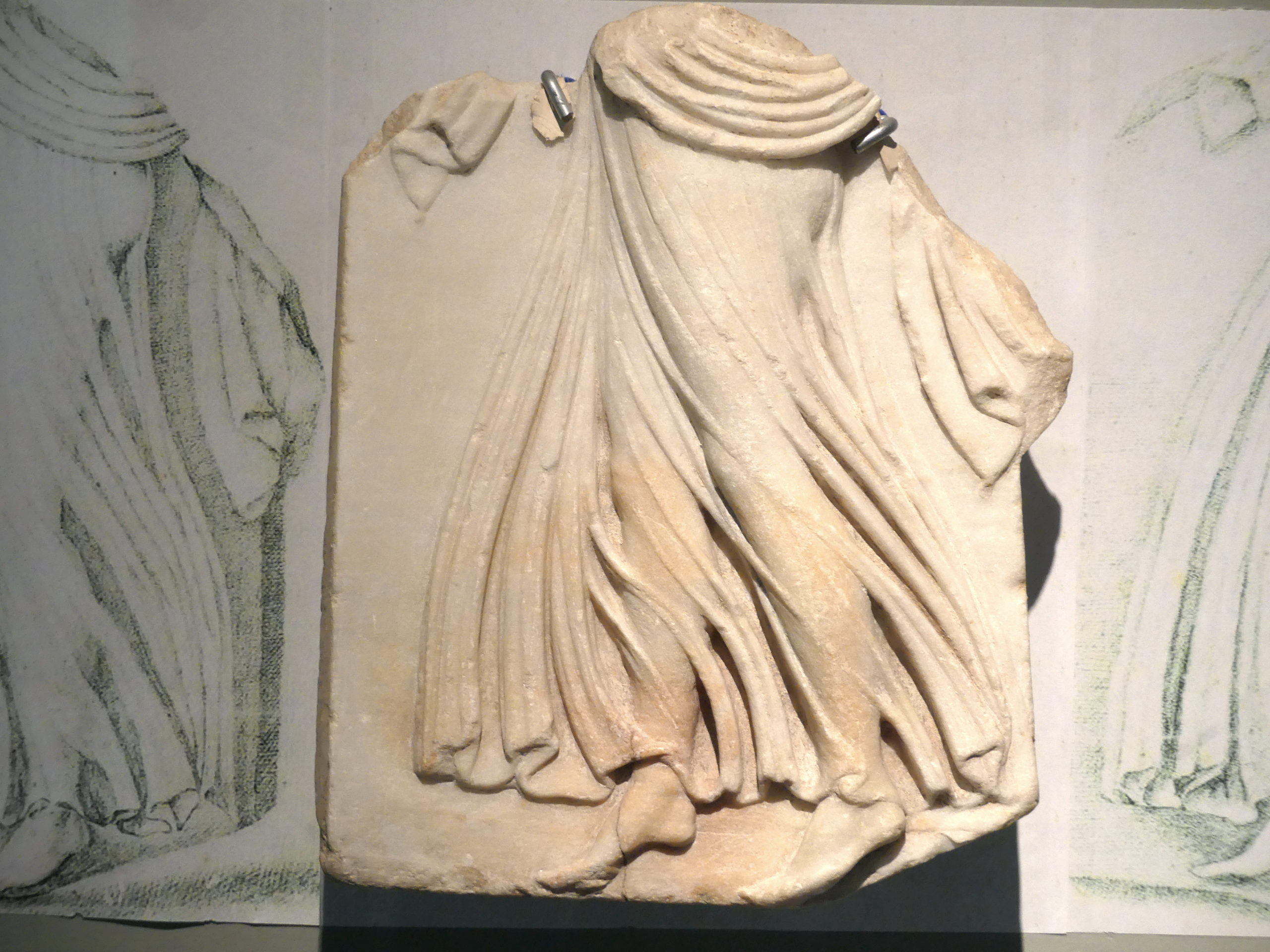
(To enlarge any picture above, click on it. Also, for more pictures from Portugal, CLICK HERE to view the slideshow at the end of the itinerary page.)


